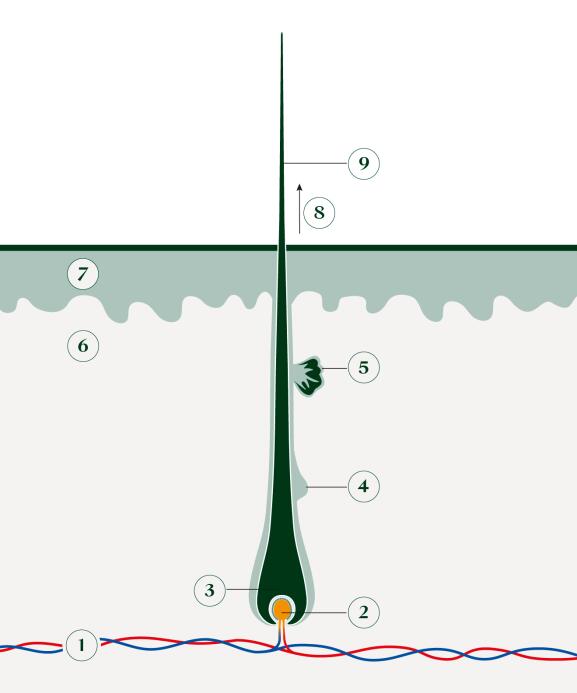Factors that trigger hyper-seborrhea
There are various causes that can promote or accentuate hyper-seborrhea.
A genetic factor: hyperactivity of the sebaceous gland.
The sebaceous gland is actually an androgen-dependent organ. This means that androgens (or male hormones) are the main stimulus for the sebaceous gland. This hyperactivity may therefore be caused by:
- either an increase in circulating androgens. This is the least frequent case. It is then a real pathology;
- or isolated hyperactivity of 5α-reductase, which leads to a deregulation of sebogenesis.
External aggressions: climatic or chemical
- pollution, prolonged exposure to the sun
- styling, blow-drying with too much heat
- unsuitable, irritating hair care products that strip the scalp and cause reactive hyper-seborrhea.
Emotional stress, nervous tension exacerbating the sebaceous function.
Certain medications: antibiotics, diuretics, anticoagulants.
Certain diseases: such as Parkinson's disease.
Endocrine disorders.
The consequences of an oily scalp are not only aesthetic
The main inconveniences of hyper-seborrhea are certainly aesthetic.
People with an oily scalp complain, first and foremost, that their hair is difficult to style and that it’s impossible to keep it place for long. Their hair is flat, dull and lacks volume.
In fact, the hair is weighed down at the roots, as if overloaded by this excessive sebum. It loses its lightness and shine. It clumps into strands. It no longer breathes and takes on a heavy appearance.
But the excess sebum secreted also leads to skin complications.
It leads to the proliferation of lipophilic saprophytic flora, made up of bacteria and yeast. This flora, through the lipases it produces, hydrolyzes the triglycerides in the sebum into free fatty acids.
These fatty acids are irritants. They provoke an inflammatory reaction that keeps stimulating the sebaceous gland, and therefore leads to hyper-seborrhea. It is a vicious circle!




